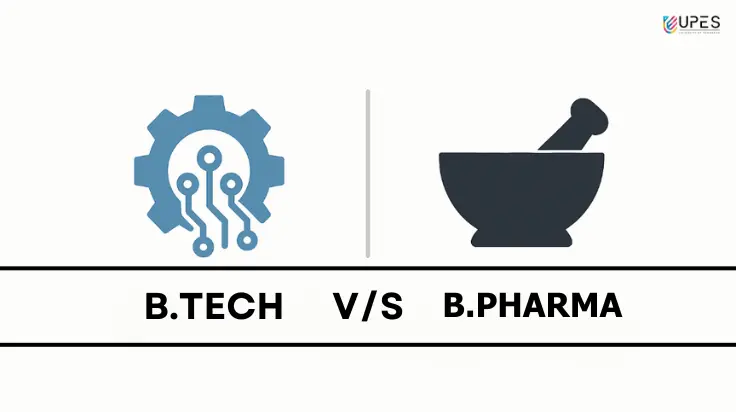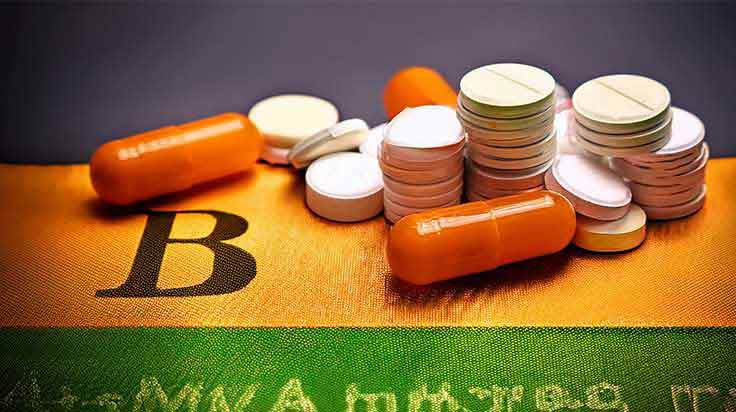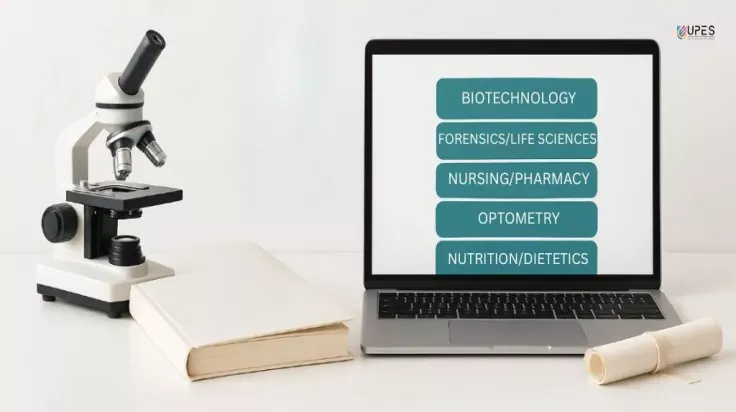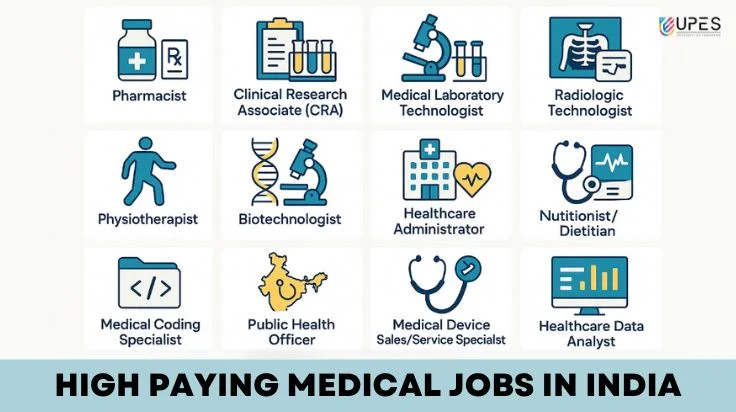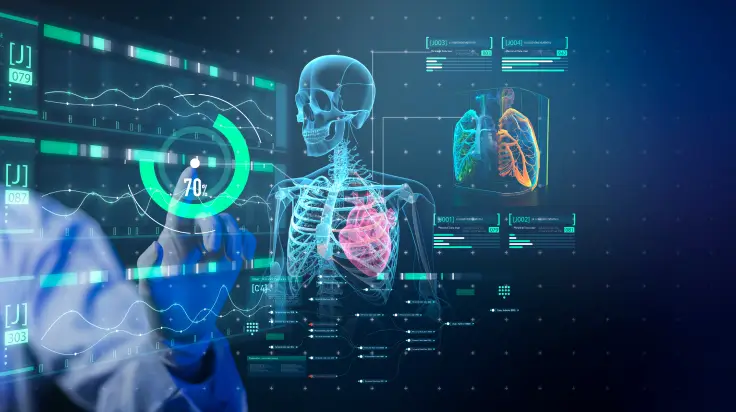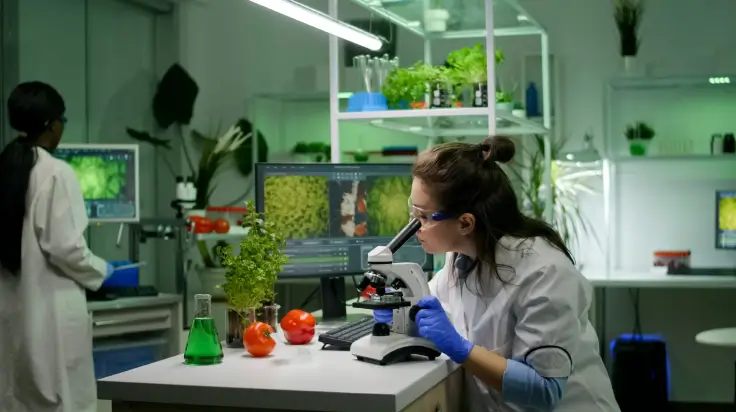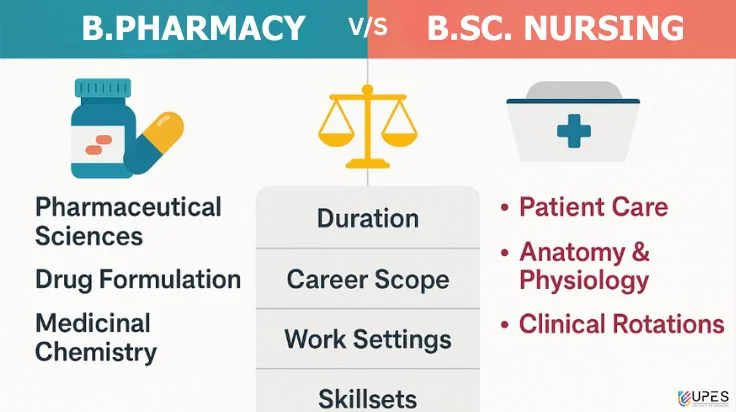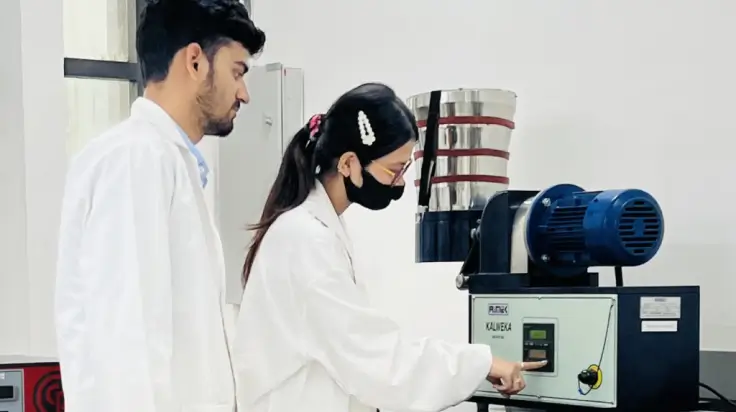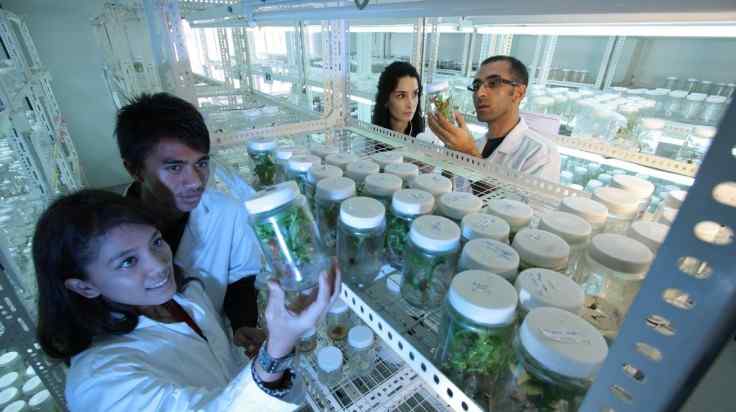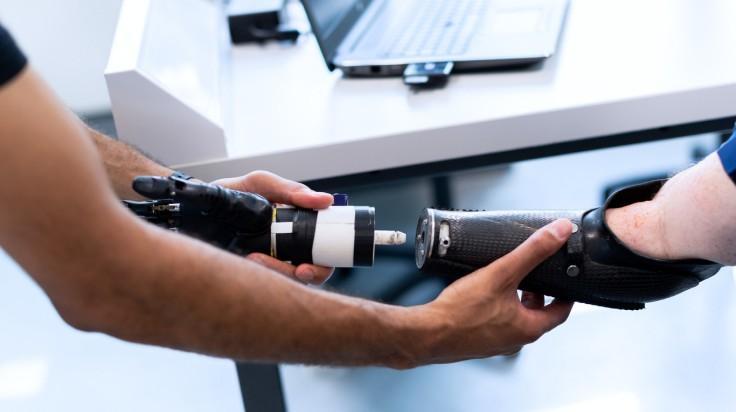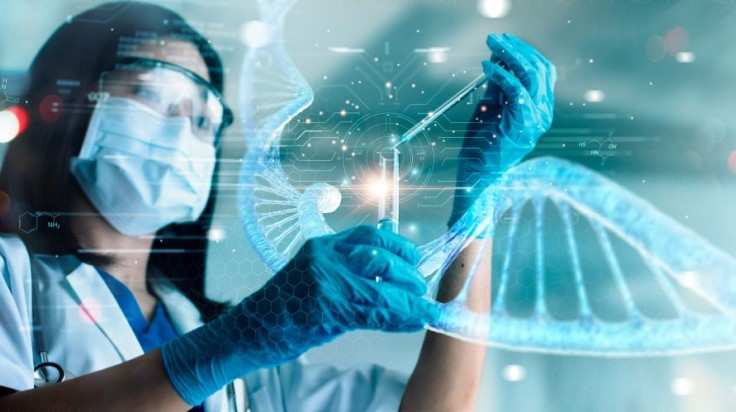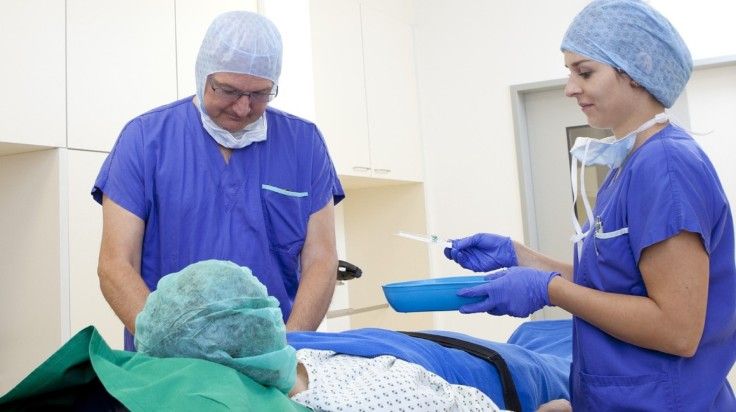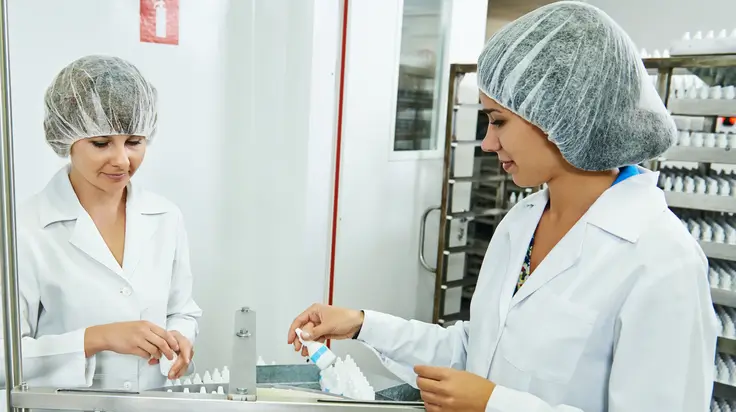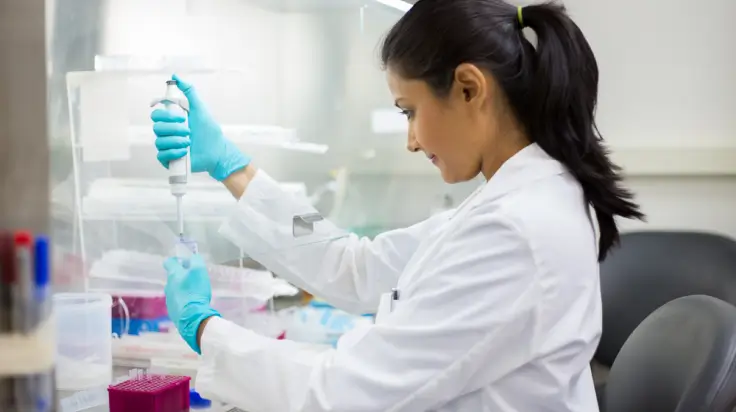What is Biostatistics? – Types, Application, Research Methodology, Examples, Courses & Salary
- UPES Editorial Team
- Published 05/08/2025
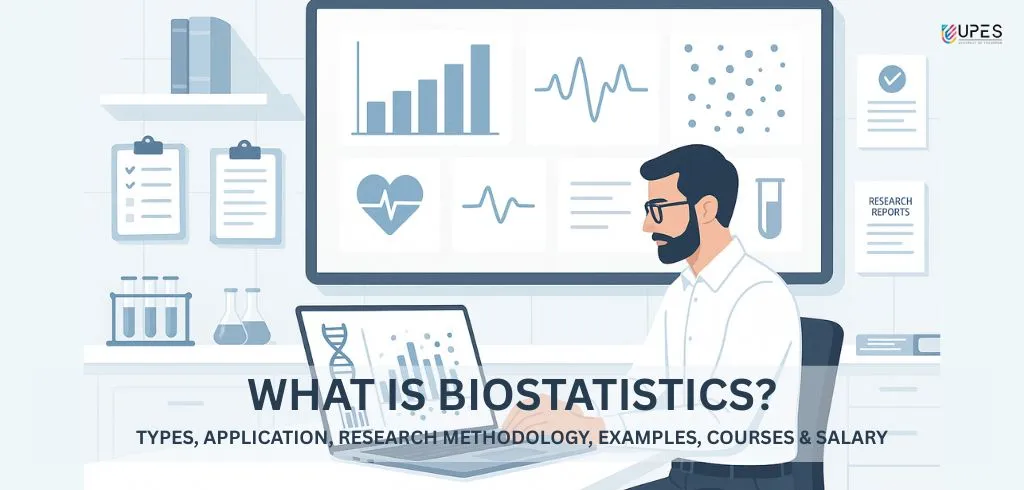
Biostatistics, an indispensable arm of modern science, lies at the confluence of biology, statistics, and public health. It serves as a methodological cornerstone in understanding patterns, testing hypotheses, and making decisions based on biological data. In a world increasingly driven by data, biostatistics provides researchers, healthcare professionals, and policymakers the tools to make informed, evidence-based decisions.
In this academic blog, we answer the essential question—What is biostatistics—and delve into its types, applications, methodologies, and career prospects. Whether you're a budding researcher or a student exploring career paths, this guide will help you understand the relevance and scope of biostatistics today.
Become future-ready with our Health Sciences & Technology programs
Know MoreWhat is Biostatistics and Its Types?
Biostatistics is the branch of statistics that deals with the collection, analysis, interpretation, and presentation of biological data. It plays a critical role in the design of biological experiments, especially in the fields of medicine, agriculture, public health, and epidemiology.
It helps in translating raw data into meaningful insights that can inform scientific discovery, medical diagnoses, treatment protocols, and public health policy.
Types of Biostatistics:
Biostatistics is broadly categorized into the following types:
Descriptive Biostatistics:
- Involves summarizing and describing features of a data set.
- Common measures include mean, median, mode, standard deviation, and frequency distributions.
- Used in reporting disease prevalence, demographic statistics, and hospital records.
Inferential Biostatistics:
- Makes predictions or inferences about a population based on a sample.
- Techniques include hypothesis testing, confidence intervals, regression models, and ANOVA.
- Essential in clinical trials and epidemiological studies.
Analytical Biostatistics:
- Focuses on identifying associations or causal relationships between variables.
- Used extensively in public health to explore risk factors and disease determinants.
Clinical Biostatistics:
- Applies statistical methods to clinical research, especially trials and treatment efficacy studies.
- Involves survival analysis, meta-analysis, and Bayesian statistics.
What is Biostatistics and Its Application?
Biostatistics is not merely a theoretical discipline. It plays a foundational role in real-world applications across diverse domains.
1. Public Health and Epidemiology:
- Helps monitor disease outbreaks, such as COVID-19.
- Supports vaccination strategies, health surveillance, and resource allocation.
2. Medical Research and Clinical Trials:
- Aids in drug development by evaluating efficacy and safety.
- Used to calculate sample sizes, analyze treatment effects, and monitor side effects.
3. Genetics and Genomics:
- Helps in interpreting gene expression, genome-wide association studies, and population genetics.
4. Environmental and Agricultural Sciences:
- Tracks ecological impact, crop patterns, and pest control strategies.
- Designs experiments for yield improvement and disease resistance.
5. Health Economics:
- Evaluates cost-effectiveness of interventions.
- Influences policy decisions regarding healthcare budgets.
6. Psychology and Behavioral Sciences:
- Quantifies cognitive and emotional responses.
- Measures effectiveness of therapies.
Interesting Fact: The Framingham Heart Study, initiated in 1948, is one of the most well-known applications of biostatistics in identifying cardiovascular risk factors. It still informs global heart health guidelines.
What is Biostatistics and Research Methodology?
Research methodology in biostatistics refers to the systematic approach employed to conduct scientific studies. It ensures that results are reliable, valid, and reproducible.
Key Components:
Study Design:
- Cross-sectional, case-control, cohort, and randomized controlled trials (RCTs).
- Proper design minimizes bias and enhances the validity of findings.
Data Collection:
- Biostatisticians design tools like surveys, medical record extractions, and bio-sample repositories.
Statistical Modelling:
- Regression models, logistic analysis, and survival models help reveal trends and associations.
Sampling Methods:
- Techniques such as stratified sampling and random sampling ensure representativeness.
Hypothesis Testing:
- Determines the significance of results using p-values and confidence intervals.
Key Takeaway:
Biostatistics and research methodology go hand-in-hand to ensure scientific inquiry is rigorous, unbiased, and applicable.
Biostatistics with Example
To better understand what is biostatistics, let us consider a practical example:
Example:
Suppose researchers are testing a new diabetes drug. They divide 500 patients randomly into two groups—Group A receives the new drug, and Group B receives a placebo. After 6 months, the blood glucose levels of both groups are measured.
- Using descriptive biostatistics, researchers summarize the mean blood glucose level in each group.
- Inferential statistics help them determine if the observed differences are statistically significant.
- Regression analysis may identify whether factors like age or BMI also influence the drug's effectiveness.
This entire process—planning, sampling, analyzing, and interpreting—is driven by biostatistical methods.
Biostatistics Courses in India
Here’s a detailed list of Biostatistics-related courses in India across Undergraduate, Postgraduate, Diploma, and Certificate levels, with the name of the institution offering each course.
Undergraduate Courses in Biostatistics
| Course Name | Institution | Duration |
| B.Tech in Biotechnology (with Biostatistics module) | UPES Dehradun | 4 Years |
| B.Sc in Biostatistics | Private University in Coimbatore | 3 Years |
| B.Sc (Hons) in Biostatistics | College in Srinagar (Cluster University) | 4 Years |
| B.Sc in Bioinformatics (with Biostatistics focus) | VIT, Vellore | 3 Years |
Postgraduate Courses in Biostatistics
| Course Name | Institution | Duration |
| M.Sc in Biostatistics | Medical College in Vellore | 2 Years |
| M.Sc in Statistics with Biostatistics Specialization | Indian Statistical Institute (ISI), Kolkata | 2 Years |
| M.Sc in Biostatistics and Epidemiology | PGIMER, Chandigarh | 2 Years |
| M.Sc in Applied Statistics and Informatics (with Biostatistics modules) | IIT Bombay | 2 Years |
Diploma Courses in Biostatistics
| Course Name | Institution | Duration |
| PG Diploma in Biostatistics | Universities in Andhra Pradesh | 1 Year |
| Advanced PG Diploma in Biostatistics & CDISC SAS | Institutions in Noida | 1 Year |
| PG Diploma in Epidemiology and Biostatistics | IGMPI (Institute of Good Manufacturing Practices, Delhi) | 1 Year |
| PG Diploma in Biostatistics and Data Management | Indian Institute of Public Health (IIPH), Gandhinagar | 1 Year |
Certificate Courses in Biostatistics
| Course Name | Institution | Duration |
| Certificate in Biostatistics | Institutions in Noida | 3 Months |
| Certificate Course in Biostatistics in Medical Research | Universities in Pune | 3 Months |
| Certificate in Biostatistics, Epidemiology & Research Methodology | Several Universities across India | 6 Months |
| Online Certificate in Biostatistics for Beginners | IISc Bengaluru – Centre for Continuing Education | 30 days from activation |
| Online Certificate in Biostatistics | Online Platforms / NPTEL (IIT Madras, IIT Kharagpur) | 4–8 Weeks (Varies) |
Notes & Observations
- Diverse Delivery: Courses range from full-time classroom to online/part-time, suitable for both fresh graduates and working professionals.
- Software Focus: Many diplomas emphasize statistical software like R, SPSS, and clinical tools such as SAS and CDISC.
- Career Pathways: Credentials enhance opportunities in clinical research, public health analytics, pharmaceuticals, and biotech industries.
Next Steps
- For the B.Tech in Biotechnology at UPES, review the UPES official website for the detailed curriculum, including biostatistics and computational biology modules.
- Choose between degree programs (for a comprehensive foundation) or short-term certifications (for specialized or professional upskilling).
- Consider eligibility, mode of study, duration, software training, and career focus when selecting the ideal course.
What is Biostatistics Salary?
A career in biostatistics is intellectually rewarding and financially lucrative, especially with the rising demand in healthcare and data science industries.
Average Salary Based on Roles and Experience:
| Job Title | Experience Level | Average Annual Salary (INR) | Average Annual Salary (USD) |
| Biostatistician (Entry) | 0–2 years | ₹4–6 Lakhs | $60,000–$75,000 |
| Biostatistician (Mid) | 3–6 years | ₹7–12 Lakhs | $80,000–$95,000 |
| Senior Biostatistician | 6+ years | ₹13–20 Lakhs | $100,000–$130,000 |
| Clinical Trial Analyst | 2–5 years | ₹6–10 Lakhs | $70,000–$90,000 |
| Research Scientist | 4–10 years | ₹8–15 Lakhs | $90,000–$120,000 |
Note: Salaries vary by country, employer (academia vs. pharma vs. government), and educational qualifications (M.Sc. vs. PhD).
Top Employers:
- Indian Council of Medical Research (ICMR)
- World Health Organization (WHO)
- Novartis, Pfizer, GSK
- National Institutes of Health (NIH)
- Academic and research institutions
Key Takeaways
- Biostatistics bridges biology and statistics to solve real-world problems in health and science.
- It includes descriptive, inferential, analytical, and clinical types of statistical approaches.
- Applications span public health, medicine, genetics, and environmental science.
- Research methodology underpins all biostatistical work—ensuring accuracy and validity.
- Career prospects in biostatistics are promising, with attractive salaries and global demand.
- A typical biostatistics project includes designing studies, data analysis, and interpreting outcomes.
FAQs
What is the difference between statistics and biostatistics?
Statistics is a broad mathematical discipline, whereas biostatistics specifically applies statistical techniques to biological, medical, and health-related data.
Is biostatistics hard to learn?
With a background in mathematics or biology, biostatistics is manageable. Many universities offer beginner-to-advanced courses with real-world examples to ease learning.
Do I need coding to work in biostatistics?
Yes. Familiarity with software like R, SAS, SPSS, and Python is crucial for data analysis and visualization.
What qualifications are needed for a biostatistician?
A Master’s in Biostatistics, Public Health, or Epidemiology is the most common pathway. A PhD is preferred for research or academic roles.
How is biostatistics used in clinical trials?
It ensures trials are ethically and statistically sound—determining sample size, analyzing outcomes, and minimizing errors.

Our counsellors are just a click away.
Conclusion
Understanding what is biostatistics is crucial in today’s data-centric world. As medicine becomes more personalized and public health continues to grapple with complex challenges like pandemics and chronic diseases, biostatistics emerges as a vital discipline to drive innovation and protect populations.
From designing clinical trials to interpreting genetic data and guiding public health interventions, biostatistics plays an irreplaceable role. With its strong blend of analytical rigour and social relevance, biostatistics not only drives scientific discovery but also ensures that those discoveries translate into tangible health outcomes.
As the demand for data-literate professionals surges, the future for aspiring biostatisticians looks brighter than ever.
UPES Editorial Team
Written by the UPES Editorial Team
UPES Admission Enquiry
Subscribe to UPES Blogs
Join our community for exclusive stories, insights, and updates
By clicking the "Subscribe" button, I agree and accept the privacy policy of UPES.












